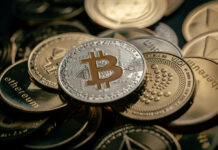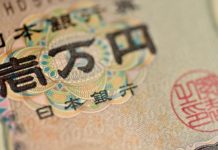Markets
The escalated military threat of a Russian invasion in Ukraine added another dark layer over already soured risk sentiment. Main European equity indices lost around 4% with some of them now also officially in correction territory (>10% sell-off from top; eg AEX). The EuroStoxx50 tested key support at 4046/4025 (November low and incoming trend- or neckline from uptrend or multiple top formation). US stock markets joined the sell-off with losses of a similar magnitude. The S&P 500 tested for example the July (!) low at 4233. However, for the first time since early January some buyers showed up. A late rally even enabled a marginally positive close for key US benchmarks. The jury is still out on the strength of this move. Asian stock markets don’t copy the late Wall Street optimism and lose up to 2%. US equity futures are downwardly oriented again as well. Is the sell-off really over or was yesterday’s action more of a dead cat bounce? At least going into the FOMC meeting, we’d err on the side of caution. We expect the Fed to pre-announce a March rate, potentially end net asset purchases altogether and perhaps already give some more guidance on how it plans to conduct a balance sheet roll-off later this year. Such rapid normalization drift in combination with stubbornly high inflation and its consequences for future growth all suggest a difficult year ahead for risky assets.
Yesterday’s intraday rebound on US stock markets pulled other haven assets like core bonds off their highs. The US yield curve steepened with daily changes ranging between -3.1 bps (2-yr) and +4 bps (30-yr). European markets closed when the US hit bottom levels, explaining the “outperformance” of German Bunds on the daily scorecard. Yields dropped by 3 to 4 bps with the belly performing slightly better than the wings. The dollar for most of the day outperformed all other currencies, but closed off best levels as well. EUR/USD narrowly held withing the slow upward trading trend channel, closing at 1.1326. EUR/GBP moved above first resistance at 0.8381 to close the session at 0.8397. Today’s eco calendar contains US housing prices, US consumer confidence and German Ifo Business sentiment. The IMF launches its world economic outlook update with the US Treasury selling $55bn 5-yr Notes. We expect the eco calendar to maintain subordinated to global sentiment. We think it’s too early to call an end to the risk correction and prefer the traditional haven assets/correlations.
New Headlines
Q4 Australian headline inflation accelerated to 1.3% Q/Q and 3.5% Y/Y. The core trimmed mean measure, which is closely watched by the Reserve Bank of Australia, also rose more than expected, by 1.0% Q/Q and 2.6% Y/Y. Price rises were broad-based, including a substantial 4.4% rise in prices for new dwellings. In this respect, the Australian statistics bureau mentioned that “shortages of building supplies and labour combined with continued strong demand for new dwellings, contributed to price increases for newly built houses, townhouses and apartments”. Today’s data suggest that (core) inflation is moving higher in the 2-3% target range sooner than the RBA expected. The RBA meets on February 1. In its December statement, it indicated to consider the bond buying program at that meeting. Halting net purchases is highly likely. Markets currently discount a RBA rate hike at the June meeting. The Aussie dollar temporarily gained a few ticks this morning, but a fragile global risk sentiment capped any sustained move higher (AUD/USD 0.7140).
The Monetary Authority Singapore today unexpectedly tightened monetary policy. It was the first unscheduled tightening since 2015. The MAS uses the exchange rate as its most important monetary policy tool as the country’s open economy is highly sensitive to global inflationary developments. The MAS said that it would slightly raise the rate of appreciation of its policy band. The MAS already tightened policy in October. It also raised its 2022 forecast for core inflation from 2%-3% from 1%-2% in October. The next regular policy meeting is scheduled for April. The Singapore dollar strengthened to USD/SGD 1.3435 and is near the September/October levels (1.3380/1.3420 area).













